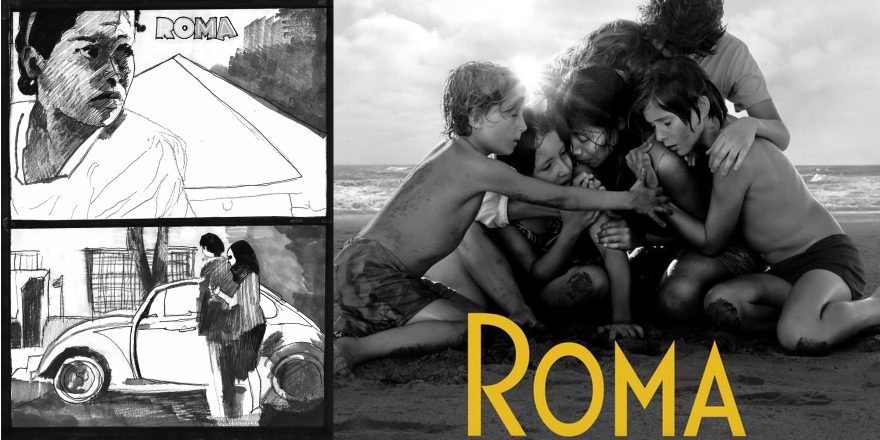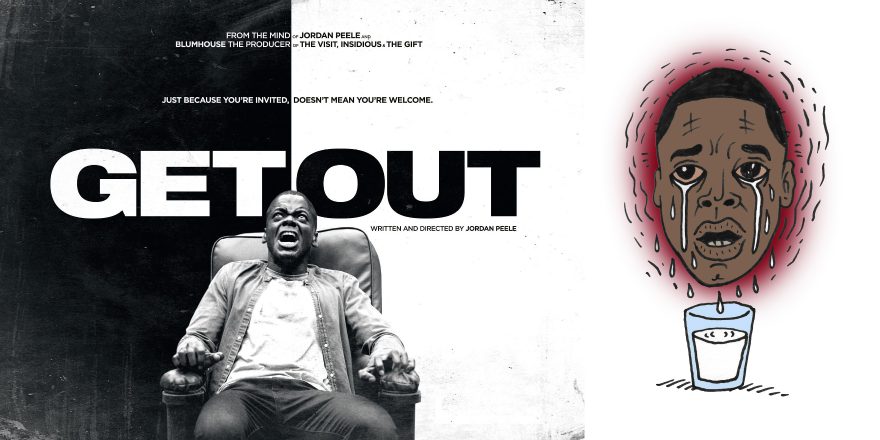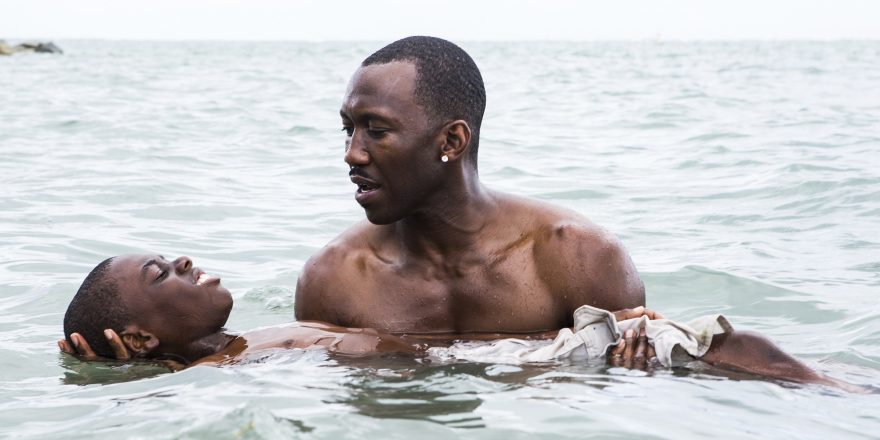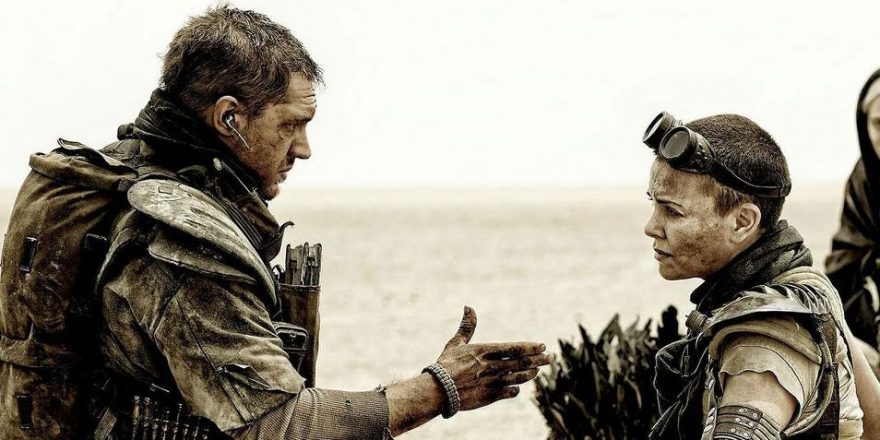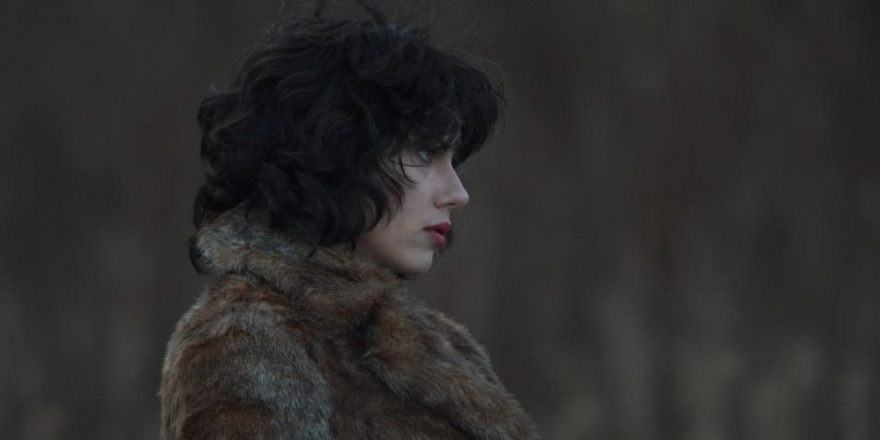Talkhouse Film contributors and a select few friends of the site voted on their favorite theatrical releases of 2018. The results of the Talkhouse Film poll are below, showing all the titles that received multiple votes; a selection of individual ballots will be posted tomorrow. Ten points were awarded to first-place films, 9 points were given to second place, etc.; for unranked lists, each selection was awarded 5.5 points, the average of 1 to 10, giving each equal weight.
Thanks to all who voted, and to the following contributors, whose incredible written and graphic responses to the Top 10 films are featured below: Rodney Ascher, Nikole Beckwith, Bernardo Britto, Zach Clark, Jack Dunphy, Jeanie Finlay, Megan Griffiths, Ian Harnarine, Pat Healy, Jim Hosking, Alix Lambert, Clay Liford, Danny Madden, James Marsh, Michael Pearce, James Ponsoldt, Randy Russell, Leah Shore and Onur Tukel.

1. Roma 222.5
You don’t actually watch a film like Roma.You just keep your eyes and ears open and the film is smoothly poured into you. It’s the most amazing thing, really – because the film is completely flawless and exquisitely executed in every aspect. Every shot, cut, movement, gesture, sound has been thought about deeply then fashioned and wrought lovingly. And yet this fastidiousness creates an organic whole which is teeming with the bustle and truth of real life and animated by the urgency of its director’s quest to give dramatic form to his childhood memories.
The funny thing is that I don’t want to see the film again – not now, or anytime soon. This is unusual. As a filmmaker, when you see a film that impresses you, your first instinct is to watch it again. And on a second viewing, you can’t stop yourself dissecting the mechanics of how it was done. Inevitably, that process heightens your awareness of the director’s achievement but tends to diminish your appreciation of the film as an experience.
But there’s a rare category of film that refutes this covetous, analytical instinct – films that so change your perception of what cinema can achieve that you just want to hold onto that first viewing and cherish the memory of its many beautiful souvenirs. In a lifetime of viewing films, there’s only a few films that have prompted this reaction and I can remember them all – Blue Velvet, The Thin Blue Line, La Jetée, Andrei Rublev, Come and See, Taxi Driver, Irreversible, The Spirit of the Beehive, Barry Lyndon, Los Olvidados, Performance and Alan Clarke’s Elephant. They may not be my favourite movies (though some are) or indeed the best work by their respective directors (debatable), but each one left me giddy, intoxicated and changed. Of course, they were mostly encountered when I was younger – you’ve had most of your lasting impressions by the time you reach middle age. It’s not that you’ve seen it all before but rather that certain films make such a powerful impression because, well, you see them when you’re impressionable.
And so now Roma. It’s been a long time since I felt that way about a film and I’m grateful to Cuarón, who might just be the best director currently working in cinema. This is his masterpiece, a film that will be enjoyed and studied (in the fullness of time by me) as long as people watch movies. (James Marsh)
Image by Alix Lambert
2. First Reformed 168.5

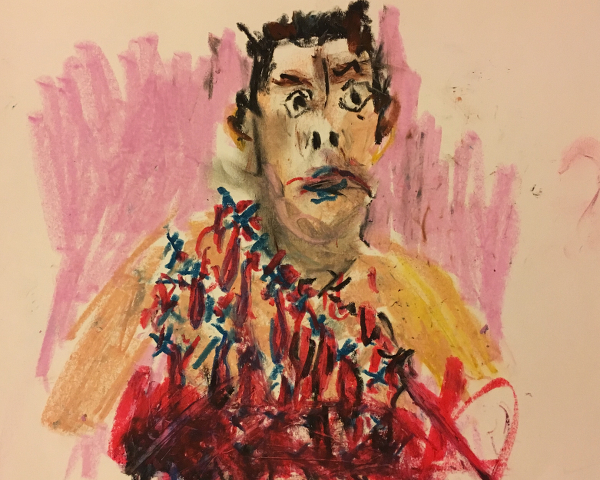
I first saw Paul Schrader’s sobering pseudo-thriller at the Maryland Film Festival, after it had been emphatically recommended to me by lots of people, with praise as lofty as “masterpiece” and “Schrader’s best film.” I was very, very into it upon first viewing, but the next day found myself strongly tempted to watch it all over again at its second screening. I didn’t, and the nagging desire to revisit it stuck with me until it landed on streaming video. My second viewing confirmed it. First Reformed is wholly a masterpiece, unafraid of asking the biggest of the big questions in a recklessly bonkers, completely sincere way. Looking forward to watching this again and again until the Earth dies, which, as the movie makes clear, is really soon. And my mom liked it, too! (Zach Clark)
Images by Randy Russell
3. The Favourite 133
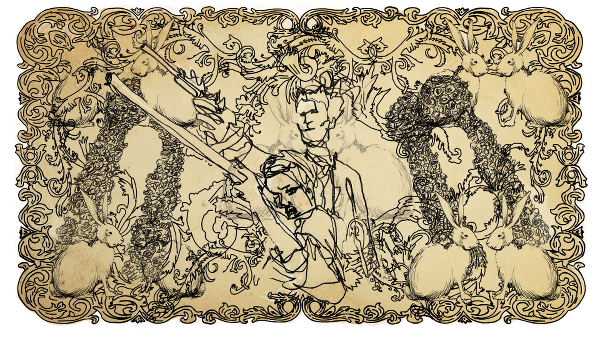
Much has been made of The Favourite being a departure from what we’re to expect from a Yorgos Lanthimos film but I felt like it was a synthesis of his themes and obsessions only brought to life through more full-bodied characters.
It immediately feels like a Lanthimos film, there’s the initial impression of Buñuelian absurdity, Kubrickian aesthetics and his unique approach to physical performance. There’s bizarre dancing, deadpan sex acts and abrupt violent ones which dare us to laugh. There’s derangement and rebellion, imprisoned characters, the corruptive effects of power and treacherous search for emotional connection.
The major difference I see from his previous work is that he’s allowed his characters to really live and breathe. There’s a naturalism in the performances and the actors are no longer hemmed in by the flat delivery style he’s opted for in his other films. And whilst, on a scene-by-scene basis, this often produced hilarious results, it also distanced me from his characters, and by virtue of this, the films. Only Dogtooth, with its family-unwittingly-held-hostage theme, seemed to fully justify this approach.
In The Favourite, the actors have the room to fully inhabit their characters. They don’t feel like puppets used and abused to explore a theme. They feel real and fully formed, who exhibit relatable human behavior (though magnified for effect). It’s the characters that are wicked, irreverent, diabolical and manipulative rather than the filmmaker. I’ve always been a Lanthimos fan (he’s never less than tonally unique and aesthetically captivating), but I desired less cynicism and more humanity from his films.
So, for me, it’s the depth in the characters, and emotional range in the performances, which make The Favourite the most alive, engaging and complex of his films. He holds up a funhouse mirror to the audience – warping, accentuating, and compressing our features for comic, horrific and now human effect. (Michael Pearce)
Image by Leah Shore
4. The Rider 120
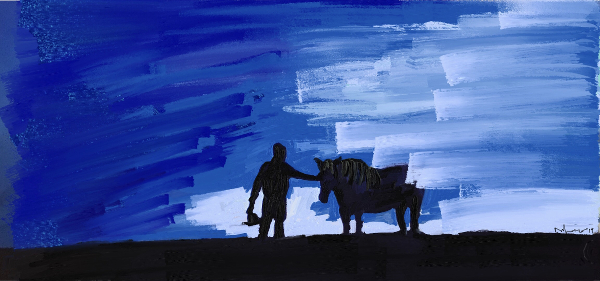
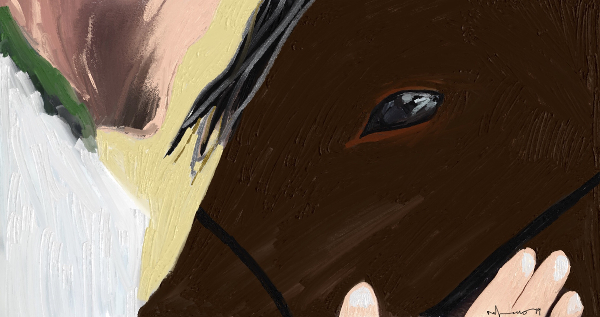
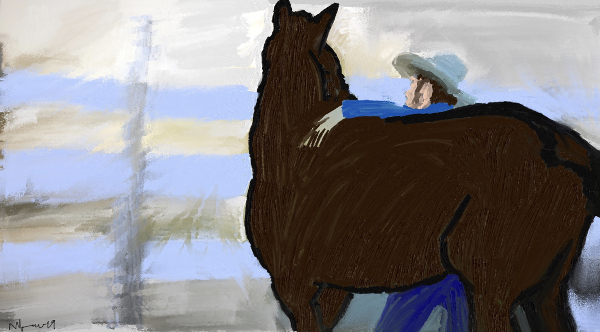
The Rider feels inevitable, as though the evolving story of 21st century America as viewed through the lens of the Western film genre was leading towards Chloe Zhao’s humane and radical vision. In a society that worships at the altar of success, the journey of Lakota cowboy Brady Jandreau – the protagonist of The Rider – is a transmutation of rodeo dreams into the shock of mortality.
Bones break. Bodies break. Death is everywhere. But the simple pleasures of life, as depicted in The Rider – imbibing and praying with fellow cowboys, being a good son and brother, feeling a connection between man and animal that transcends language, helping a paralyzed friend remember the sweetness of life – suggest that our greatest chance at immortality (in life and in life represented in cinema) comes by abiding in humility and love. (James Ponsoldt)
Images by Nikole Beckwith
5. Shoplifters 105.5
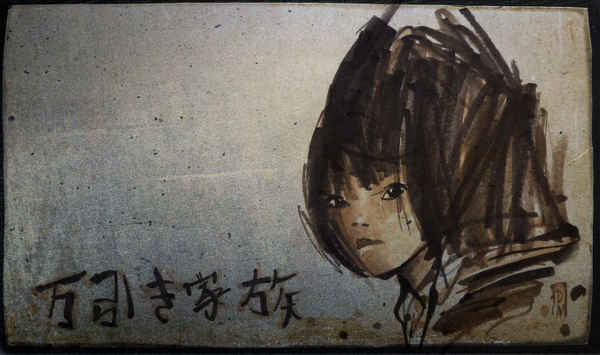
There is an intensely peculiar pleasure (for me) in crying in the dark surrounded by strangers. A moment of openness with the screen and of shared emotional recognition. Watching Hirokazu Kore-eda’s intimately drawn film Shoplifters, I could feel the sorrow moving around the cinema in powerful, incremental waves. It’s a fable of what constitutes family love and the ties that bind marginalized lives. Small moments of tenderness and trauma are told with an unshowy dexterity. The film is a knockout and left me with a lingering feeling of intense melancholy for a day after watching. (Jeanie Finlay)
Image by Danny Madden
=6. Eighth Grade 102

In a vast sea filled with coming-of-age movies, it’s rare to see one break new ground. With Eighth Grade, Bo Burnham gives us something we rarely see, the (near) anti-hero-teen, and updates her for the internet age. By that, I mean a character who constantly defies you to like her. One who fights with her well-meaning father, and who initially seems more than a little shallow and vain. Kayla feels authentic through and through, down to her usual inability to complete full sentences in even the most basic social situations. People use “warts and all” to describe things that usually don’t merit the term, but Eighth Grade really hits upon the uncomfortable aspects of burgeoning teenage life. It really shines in the quiet moments, where lesser films would have cut away. I was particularly pleased with the way it handled most adults, not making them easy stock villains, rather the perfect foil for a generation of kids glued to their iPhones. Extra points for being the first movie to depict the comic absurdity of school shooting drills. (Clay Liford)
Image by Bernardo Britto
=6. You Were Never Really Here 102
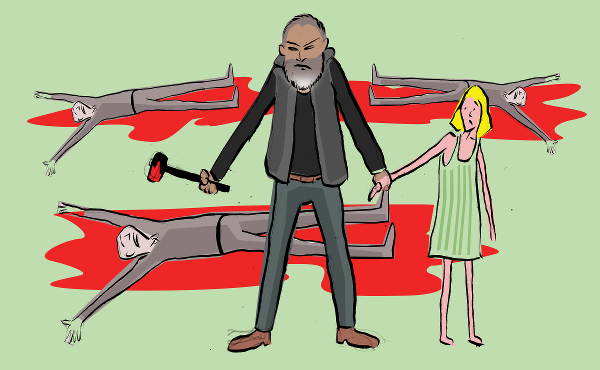
I have seen too many movies about hitmen. When you consider the percentage of the population that is actually made up of people who kill others for a living versus how many movies there are about these characters, it all just feels kind of silly. But while the pulp short story that underpins You Were Never Really Here might have been cut from similar cloth, Lynne Ramsay has created a whole new garment out of it. Where other films have gloried in the violence, fetishized the bloodshed, and venerated the assassin at their center, Ramsay utilizes the brutality to depict how tragically removed from feeling this character has become. He’s no hero, he’s barely functional in society. He’s a shell, his actions shaped by childhood abuse and psychological wounds of war. I have spent the year talking a lot about the impact of violence in media as I’ve been traveling with my own film, Sadie. You Were Never Really Here is a brutally violent film, and like so much of our entertainment, it features a character who seemingly has no emotional connection to the act of killing. The difference in Ramsay’s film is that while the character may believe himself to be numb to the effects of these horrific acts, we as an audience can plainly see that’s not the case. It is clear from his posture, his gait, the sorrow behind his eyes. He is a cautionary tale. Joaquin Phoenix’s performance is beautifully textured, tortured and complex, laced with resignation and regret, and it is further elevated by Ramsay’s direction, which lingers on him, allows us to study him, fear him, pity him, and despite knowing it’s hopeless, to maybe even hope for his redemption. You Were Never Really Here takes a genre I previously thought had been done to death and infuses it with a much-needed change of perspective; it demonstrates how poetry can imbue shot design, editorial choices, performance and the aural experience and create something not just expressive, but also precise, bold, challenging and profound; and it showcases the vitality, the necessity, and the absolute gift of a great directorial voice. (Megan Griffiths)
Image by Onur Tukel
8. Burning 87
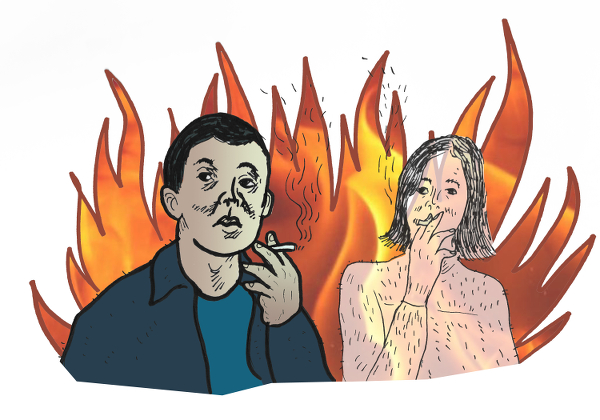
I purposefully knew nothing about Burning before I went in to see it at the Alamo Drafthouse on South Lamar in Austin. For two-and-a-half hours, I didn’t notice the people around me sucking on their chicken wings and the sticky suck-suck on their fingers. I noticed those noises when I saw one other film at Fantastic Fest. But during Burning, I noticed nothing.
Burning is based on a short story by Haruki Murakami. I read the short story after I watched Burning for the second time. The short story is the starting point for Lee Chang-dong and his co-writer Oh Jung-mi. The lucid, concise short story bears little relation to the feeling of the film. That feeling when you run and run until your legs can’t keep up with your torso.
I want to watch a filmmaker and not understand how they are hypnotizing me. It is a magic trick. And to be hypnotized by what appear to be entirely natural ingredients is the greatest magic trick of all. No special effects. Just picture and music and the rhythm they create. Burning feels like a hallucination. (Jim Hosking)
Image by Zach Clark
9. Sorry To Bother You 81.5
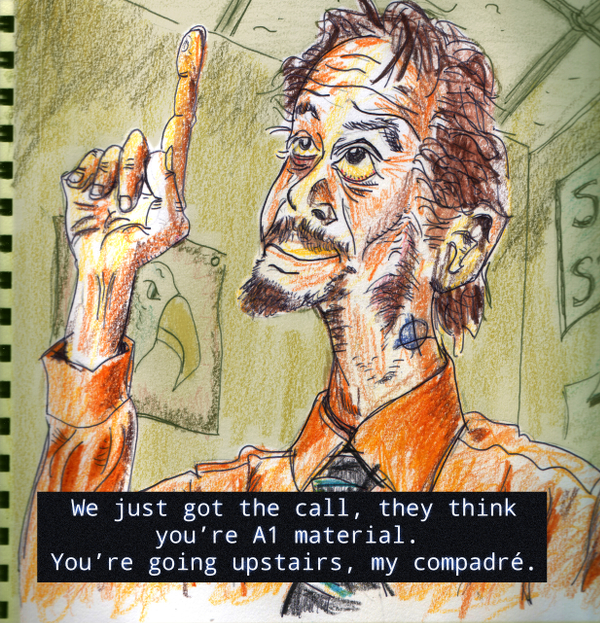
“Same struggle, same fight.” It’s the familiar activist and organizer chant that Steven Yeun’s “Squeeze” character affirms to an Equisapien who has just swooped in to save the day in Sorry to Bother You. But for me, it’s as if writer-director Boots Riley is speaking directly to me. An acknowledgment of how hard it is to make something good, something personal while still saying something. But, it’s in his film that I see something better: a better way to structure socioeconomics and our complicity in our current system. And also, a better way to make movies where you can let your crazy ideas run wild and collaborators like Lakeith Stanfield and Tessa Thompson will trust you. In Sorry To Bother You, every detail is considered, whether it’s a sound effect, a lighting gag, earrings worn by Thompson’s character Detroit, windshield wipers fastened together by a string, or the brilliant voice casting of David Cross and Patton Oswalt. Each decision is strong, purposeful and illuminates character or story. Above all, Sorry to Bother You is a personal challenge to me: make something just as original, thought-provoking and fun in our same struggle, same fight. (Ian Harnarine)
Image by Rodney Ascher
10. A Star is Born 81
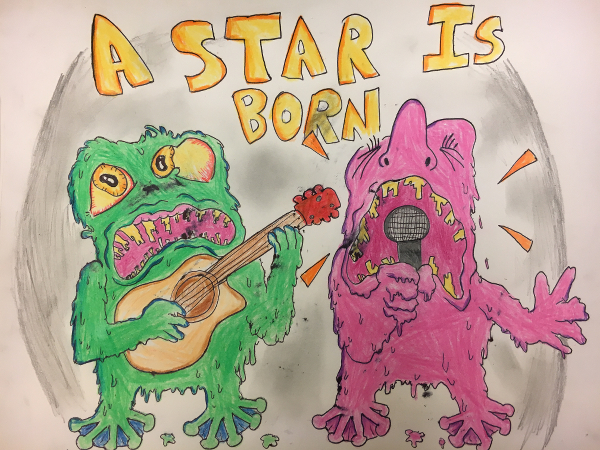
A Star Is Born is a true movie. Pure cinema. Both a recognizable human experience and larger than life. The best actors (Streep, Brando, Day-Lewis) both hold up a mirror to real life and give a performance. That magical combination of the two seemingly disparate approaches really makes it sing. A friend of mine says that movies are “An emotional envelope of sound and image.” But I feel, as a culture, we’ve lost the sense of what a large “event” an intimate movie like this can be. Why has ‘melodrama’ become a dirty word? Simultaneously, we’ve lost touch with what’s real and moving about the little moments that constitute the bigger picture as well: The gentle stroking of a nose as “Whipping Post” by The Allman Brothers plays on a bar’s jukebox, a man’s quiet heartbreak as he backs his truck out of a driveway. In the movie’s final scene, the bombast of a soaring ballad hard cuts to a quiet, intimate scene. It’s jarring, tragic, beautiful and my favorite movie moment of the year. The contrast of the loud/quiet, melodramatic/real, on stage/off, happy/sad in one simple, brilliant piece of cinematic language ties the whole thing together. That’s what still excites me about the movies. (Pat Healy)
Image by Jack Dunphy
11. The Death of Stalin 80
12. The Ballad of Buster Scruggs 79.5
13. Zama 70.5
14. Border 62
15. Cold War 61
16. BlacKkKlansman 60
17. If Beale Street Could Talk 59
18. Happy as Lazzaro 58
19. Can You Ever Forgive Me? 55
20. Leave No Trace 54
21. Paddington 2 53
22. Mandy 52.5
23. The Other Side of the Wind 51
24. Widows 49
25. Suspiria 47.5
26. Hale County This Morning, This Evening 46
=27. Black Panther 42.5
=27. Won’t You Be My Neighbor? 42.5
29. Hereditary 41.5
30. Annihilation 40
31. Minding the Gap 37.5
32. Isle of Dogs 36
33. A Quiet Place 34
34. Green Book 30
35. Three Identical Strangers 29
36. The Sisters Brothers 28
37. American Animals 27
38. Vox Lux 25.5
=39. Blindspotting 25
=39. First Man 25
41. Let the Sunshine In 23
42. Amazing Grace 22.5
43. Spiderman: Into the Spiderverse 22
44. Mission: Impossible – Fallout 21
45. Support the Girls 20.5
=46. The Old Man and the Gun 20
=46. The Wild Boys 20
=48. Bohemian Rhapsody 19
=48. Hal 19
=50. Let the Corpses Tan 18
=50. Tully 18
=50. Wildlife 18
53. Nico, 1988 17
54. Private Life 16.5
=55. Beautiful Boy 16
=55. Phantom Thread 16
57. 1985 14
=58. Custody 13
=58. Destroyer 13
=60. Climax 12.5
=60. Free Solo 12.5
=60. Nancy 12.5
=63. Blockers 12
=63. Madeline’s Madeline 12
65. A Bread Factory: Parts One & Two 11.5
=66. Caniba 11
=66. The House That Jack Built 11
=66. The Kindergarten Teacher 11
=66. The Tale 11
70. Whitney 10.5
=71. The Task 10
=71. Shirkers 10
73. Ready Player One 9
=74. A Prayer Before Dawn 8
=74. CAM 8
=74. On Her Shoulders 8
=77. Of Fathers and Sons 7.5
=77. Scotty and the Secret History of Hollywood 7.5
=79. Monrovia, Indiana 7
=79. Game Night 7
=79. Grace Jones: Bloodlight and Bami 7
=79. Incredibles 2 7
=79. Lean on Pete 7
=84. Love, Simon 6
=84. RBG 6
=86. Searching 5
=86. The Party 5
88. Crazy Rich Asians 4
=89. Bisbee ’17 3
=89. November 3


